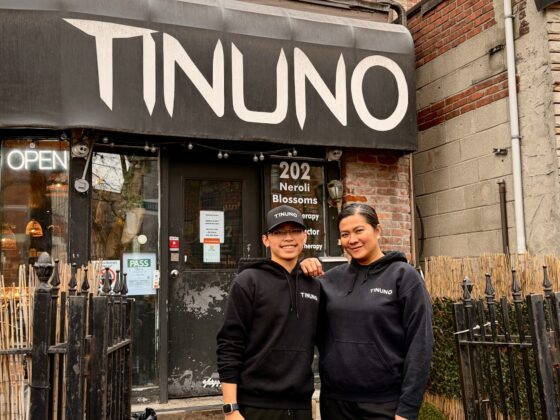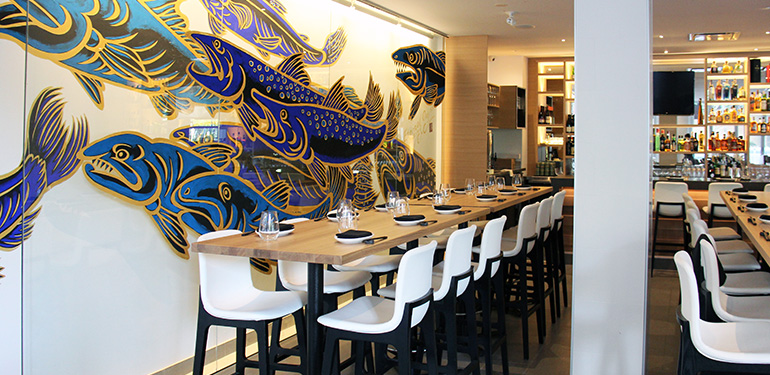
Miku Toronto is a bit of a hidden gem. The address—10 Bay St.—places it close to the waterfront, but the entrance is found through a nondescript revolving door in RBC Waterpark Place. The true scope of the 7,000 square foot space can be glimpsed through tall windows off of Front St.
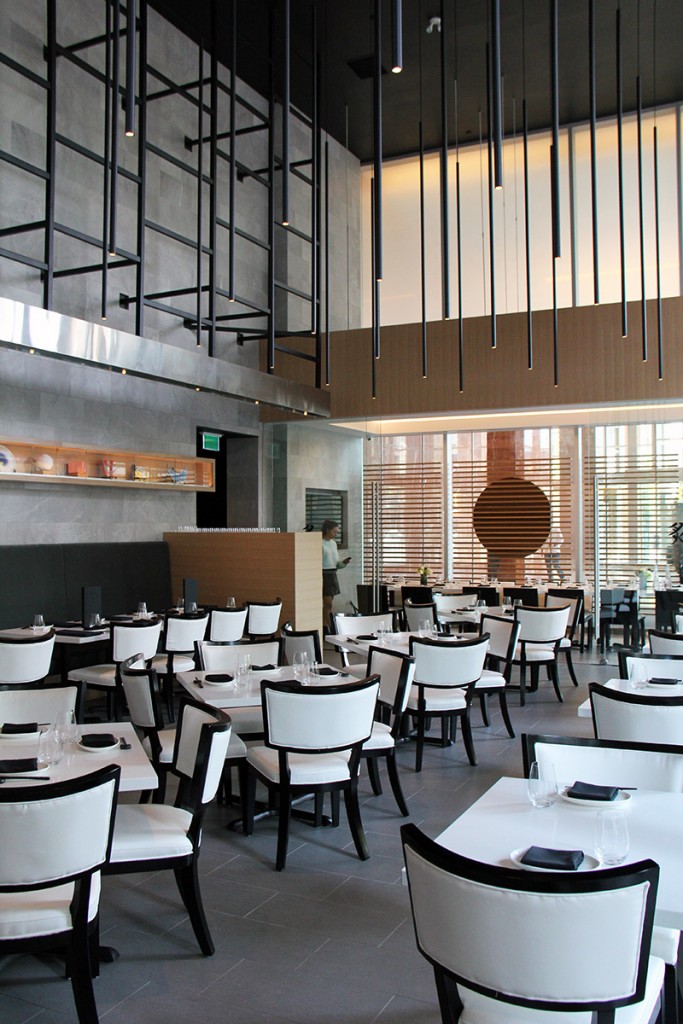
Inside, you’ll find minimalistic design done right—all the better to showcase a menu focused on bringing Aburi sushi to Toronto. For the uninitiated, Aburi sushi is flame-seared with signature sauces to draw out (and enhance) the natural flavour of the fish. Miku Toronto‘s menu spans more than just Aburi sushi, however. Corporate Executive Chef Kazuya Matsuoka, Chef de Cuisine Michael Acero, and Head Sushi Chef Kazuki Uchigoshi have crafted an intriguing combination of kobachi (or small plates), inventive entrees such as the seafood-loaded Miku signature bouillabaisse, the usual sushi suspects of rolls and sashimi, and desserts executed with a European touch.
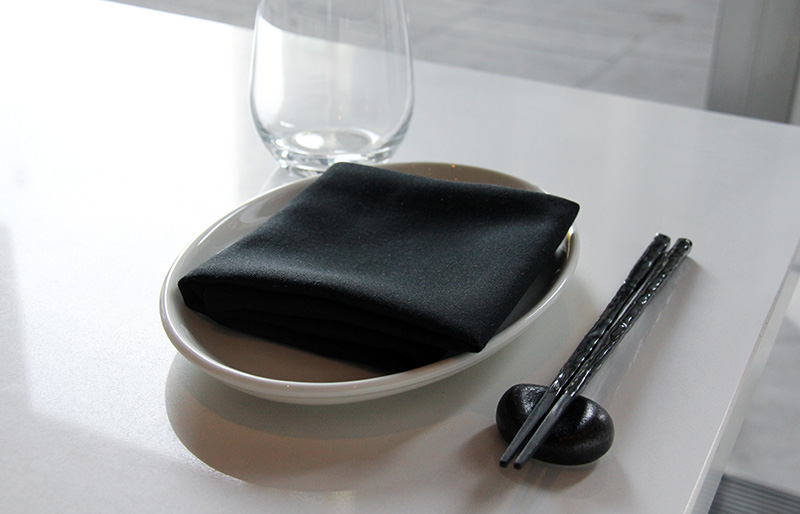
The true draw here should rightly be their Kaiseki menu which offers three prix fixe tiers, all served on truly stunning, handcrafted Arita plateware sourced from Kyushu, Japan. The Aburi, which requires 72 hours notice, rings in at $130 and delves into Aburi cuisine beyond the restaurant’s signature menu items.
ADVERTISEMENT |
The founder of Aburi Restaurants Canada, Seigo Nakamura, opened the first Miku location in Vancouver in 2008, which later relocated to Burrard Inlet. Aided by a translator, he tells us that miku, translated from Japanese, means “beautiful sky.” The new West Coast location looks out on an ocean view, and Japanese designer Ibe Takahiro—along with Vancouver’s Sarah Gillespie—were tasked with mimicking a sense of bright openness in a location somewhat encased by skyscrapers for the sophomore effort in Toronto.
What’s most impressive is that they succeeded.

The restaurant currently seats 170, with an additional 80 expected once the patio opens. It’s divided into several main areas—the open kitchen, the bar area featuring a wraparound raw bar, and the main dining room, with two private dining rooms—each offering a different atmosphere. The light-soaked main dining room is a true showstopper, with its towering ceiling, floor-to-ceiling windows, and network of slender black beams overhead, which double as unobtrusive lighting. The bar area enjoys it’s own somewhat smaller menu, and features a selection of specialty and classic cocktails, as well as a decent list of craft breweries.
Meanwhile, the sushi bar overlooking the open kitchen affords a dynamic look into the inner workings of this unique take on Japanese cuisine. It also lets you peruse the restaurant’s extensive sake collection, displayed in a glass-door cabinet.
ADVERTISEMENT |

The restaurant’s colourway (or lack thereof) of black and white—white locally sourced tables, topped with a black napkin and black chopsticks set delicately on a black stone; the plush black-trimmed white seats; pale wood high tables and accents—is surprisingly modern for a city obsessed with rustic wood, various permutations of Einstein bulbs, and dimly-lit everything. The stark palette works well as a blank canvas for the shocks of colour offered by the restaurant’s two murals, hand-painted by Japanese muralist Hideki Kimura.
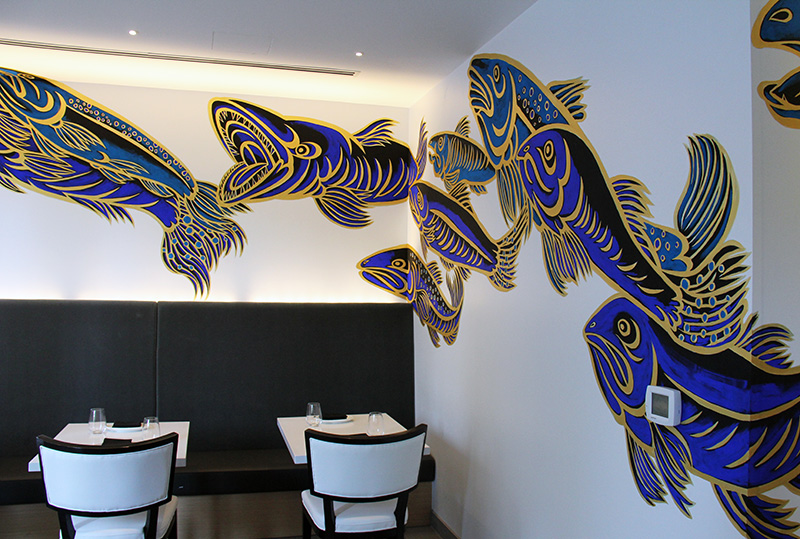
Off of the main dining room, blue and gold fish frolic along the walls. Mr. Nakamura points out that while carp (or koi) is often used in Japanese decoration, the fish are in fact salmon drawn in a Japanese style. In one of the private dining rooms, a stunning mural of red and gold (maple-esque) leafs oversees the long table.
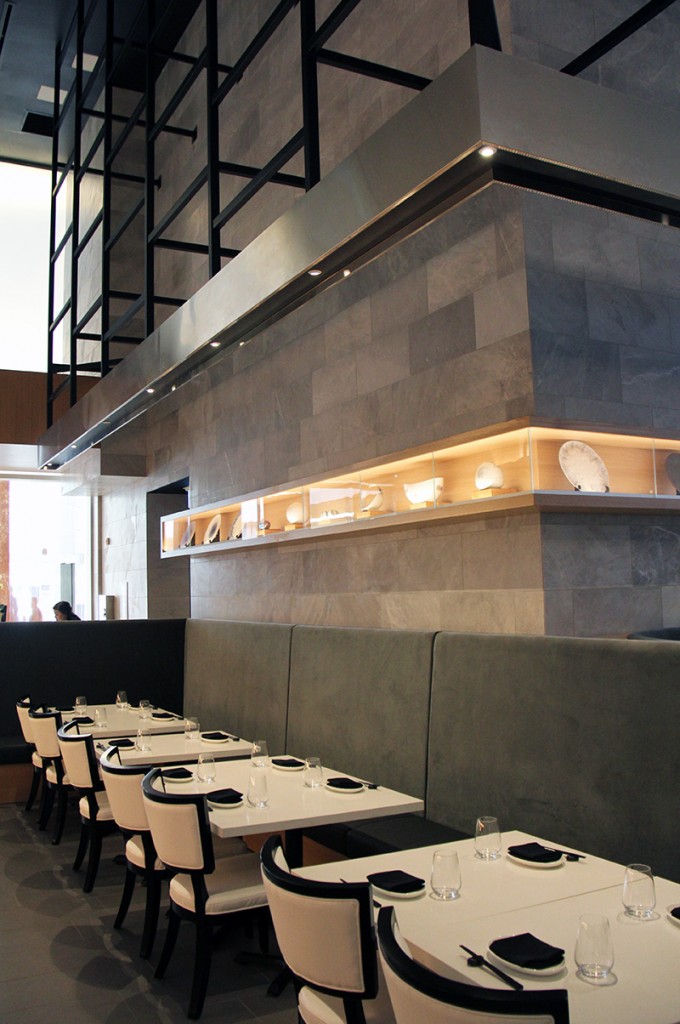
Mr. Nakamura adds that it reflects a joining together of Japanese and Canadian culture. “I love Canada,” Mr. Nakamura emphasizes.
Aburi also aims to break “the stereotypes of both Sushi and Japanese restaurants.” Mr. Nakamura clarifies that each location is tailored to its respective city, in design and menu. At both Miku locations, traditional Japanese techniques are married with local Canadian flavours, and much of the seafood you’ll find on the Miku Toronto menu is Ocean Wise.
Aburi “is about innovation; it’s about changing something for the better,” Mr. Nakamura says.
ADVERTISEMENT |
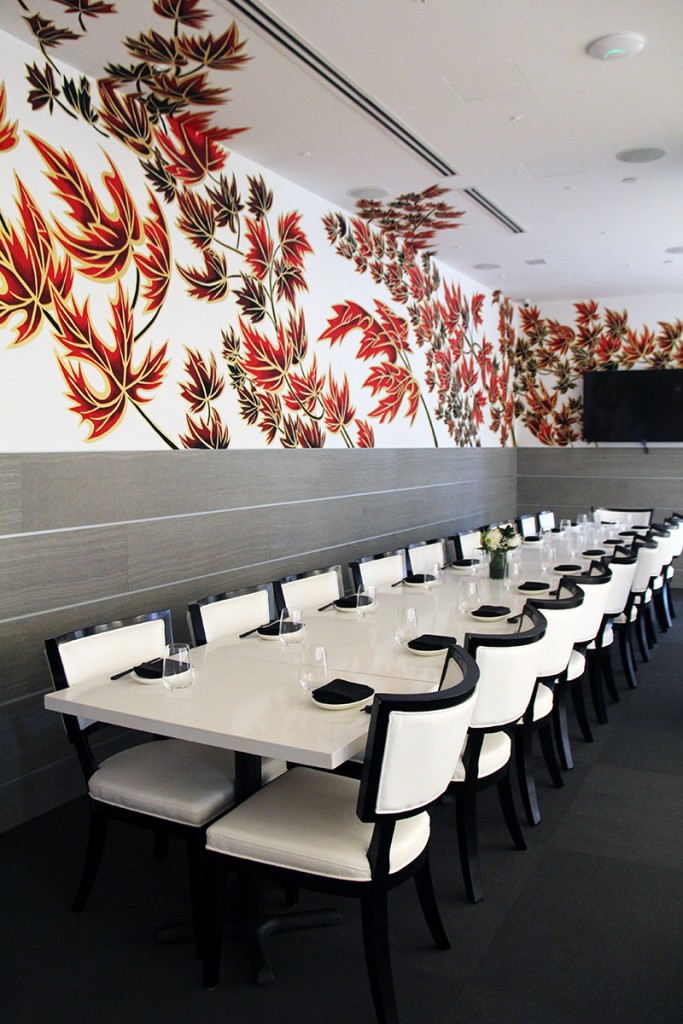
Mr. Nakamura has previously worked with designer Takahiro in Japan, but this is their first foray together in Canada. The space uses some locally sourced materials—the marble raw bar, and the wooden shelf which showcases the stunning display of Arita plates are produced by Ontario Wood Customs —while the lighting comes from Europe, and one of the private dining room’s wooden shutters and the Arita plates themselves are sourced from Japan.
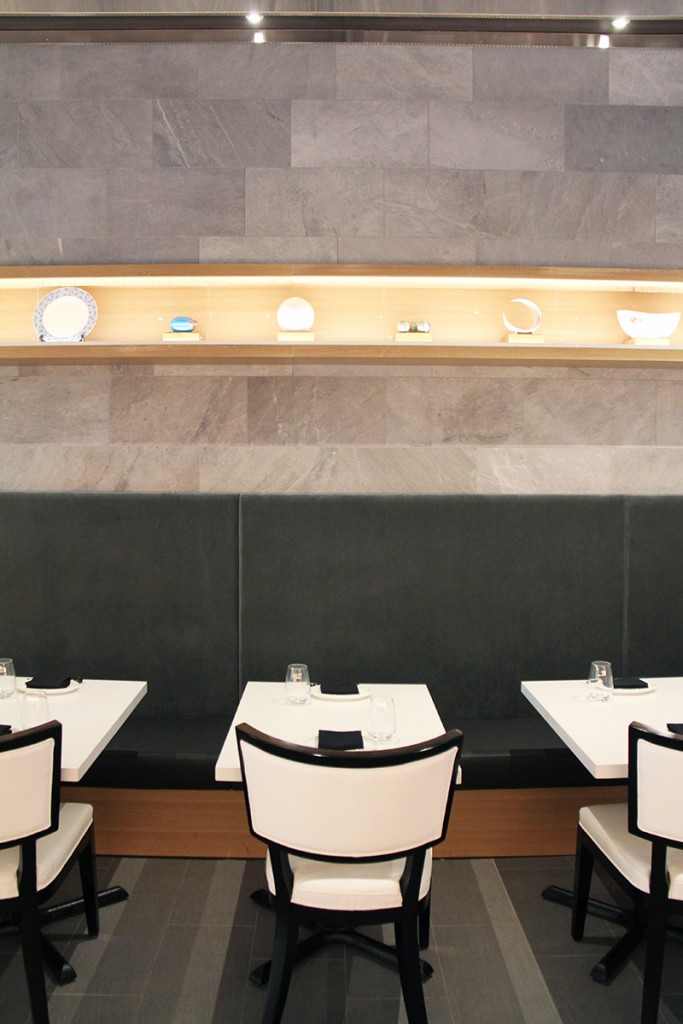
When asked if he’s pleased with the design of the space, Mr. Nakamura’s response is instant, and enthusiastic: Yes.
He mentions that whenever he designs a restaurant, “as part of the Ningenmi philosophy, we want them to feel at home [when they enter the restaurant] and so each visitor is treated as our own personal guest. This is also part of the reason that we welcome all guests with “Irrashamise,” in this way our Ningenmi philosphy is integrated as part of the restaurant.” The corporate philosophy of Aburi is Ningenmi, which can be loosely translated as “finding joy in making others happy.”
ADVERTISEMENT |

Black and white can err on the side of starkness, but here, it’s elegant, welcoming and like the food itself, a fusion of styles and cultures.
Miku Toronto will officially open for lunch and dinner on October 16, and is now taking reservations.
Related Link: 10 of Toronto’s best designed restaurants
ADVERTISEMENT |
What do you think of the design of Miku Toronto? Let Vv Magazine know in the comments below, or tweet us @ViewtheVibe.


